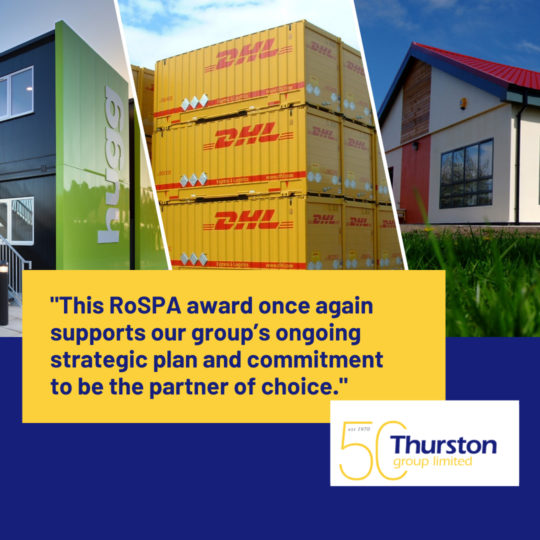Thurston Group picks up its first RoSPA award
We’re extremely delighted to announce that we’ve picked up our first internationally recognised award; the Silver RoSPA Award, in recognition of our commitment to health and safety practices across our organisation.
View More